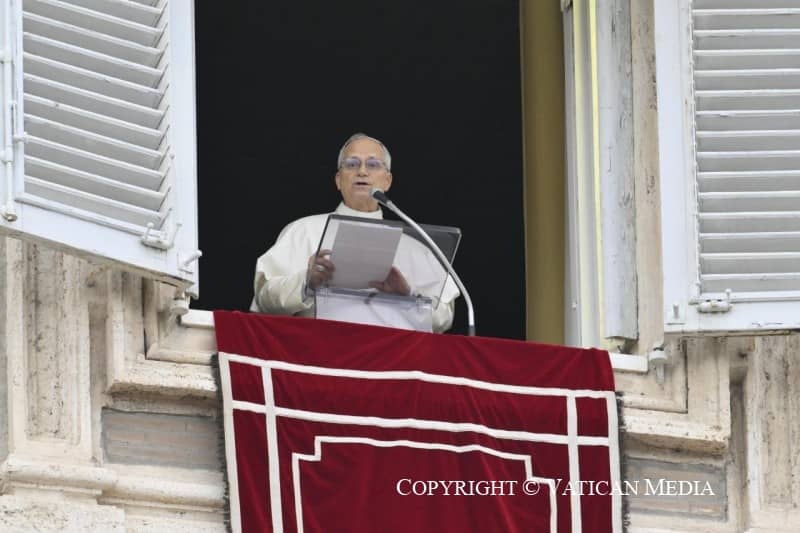In the midst of a busy Holy Week, I had a few minutes after our diocesan Chrism Mass to talk with actress and producer Roma Downey about her upcoming NBC series, “A.D. The Bible Continues.”
Downey, who played the kindly angel Monica in the hit TV series “Touched by an Angel,” was born in Northern Ireland and educated by the Sisters of Mercy at Thornhill College. Her Catholic background has been the foundation for her choice of film and television projects. The script for “Touched by an Angel” stood out from the pile of trashy projects, and it was her Catholic faith that sparked the successful “The Bible” series she produced with husband Mark Burnett for The History Channel.
For two years they developed the project and found their own funding. They consulted widely with pastors and Bible scholars to keep their film as accurate as possible. Their hard work paid off: The Bible has been viewed by more than 100 million people in the US alone. It is the No. 1 downloaded TV show in iTunes and No. 2 in Amazon’s movie and TV downloads.
That’s the kind of success that makes Hollywood sit up and take notice, and Variety magazine reported that MGM has invested heavily in Downey and Burnett’s production companies, reviving the United Artists brand to develop faith-based film and television projects. “A.D.,” a 12-episode series that premieres on NBC at 9 p.m. on Easter Sunday, is the latest in a string of faith-based projects that Downey and Burnett are bringing to the screen.
But has the mainstream success and appeal to the broad evangelical market made Catholics wary of “The Bible” and Downey and Burnett’s new series? One test is to see how the filmmakers handled the controversial figure of the Blessed Virgin Mary. Protestant filmmakers often minimize Mary’s role in the Gospel story. She makes a token appearance at the birth of Christ, then disappears from the scene. Catholic filmmakers like Franco Zeffirelli and Mel Gibson, on the other hand, highlight her central role throughout the Gospel and Passion of Jesus.
I asked Downey about the new project. She said the film, based on the Acts of the Apostles, picks up the story from the death and resurrection of Jesus and goes through 12 episodes to show how a ragtag band of disciples conquered the Roman Empire.
Downey said the film has already had a fantastic reception and that they were intent on involving Catholic clergy and scholars as consultants from the beginning. Commenting on previews, Washington, DC Cardinal Donald Wuerl enthused, “A.D. is a triumph! It tells the riveting story of the very beginning of the Church with reverence and excitement.” Archbishops Charles Chaput and José Gomez are among other Catholic luminaries who have boosted the new series, while Catholic publisher Sophia Institute Press have produced a series of books to enhance the series and inform students and Catholic parishioners about the Acts of the Apostles and the early Church.
Just how Catholic is the new series? Downey explained that the Virgin Mary makes just one appearance in the Acts of the Apostles. In Acts 1:14, it is recorded that Mary, the mother of Jesus, is present at the foundation of the Church on the day of Pentecost. Catholic artists have always portrayed her as a central figure at the descent of the Holy Spirit. Catholic theologians extrapolate from this to affirm that one of the titles for Mary is therefore “Mother of the Church.” While it is not the brief of the film series to preach Catholic doctrine, Roma Downey said that the film is faithful to Scripture and the Blessed Virgin is not only a primary figure at the crucifixion of Jesus, but is also central on the day of Pentecost.
Downey then went on to discuss how the films are more deeply Catholic than simply making sure Mary is a key figure.
“The Catholic faith has always been visual. Think of the icons, stained glass windows, and the great tradition of Catholic art,” she said. “Films also capture the imagination and appeal to the emotions. As such, they go directly to the heart of people’s motivations. The door to the heart opens into the mind and motivates action.”
Catholic artists have been able to incarnate the faith in works of art because Catholicism, with its emphasis on the sacraments, is deeply incarnational. In Catholicism, the Word is always being enfleshed in the world, and Catholic art is part of that process.
Focusing on the Bible rather than explicit Catholic doctrine means the series will cut across cultural, denominational, and doctrinal divisions, Downey explained. “We can see families all across America from every different religious tradition and none, sitting down to tune in to this exciting story,” she said.
If she’s right, then “A.D. The Bible Continues” will also be Catholic because it is ecumenical in the right sense — not getting caught up in theological disputes and discussions, but focusing on the core of the Christian story that all Christians share.
Talkative and bubbling with enthusiasm for her work, Downey shared with me the important role her Catholic faith has played throughout her life. Married to an Englishman, she was interested to hear that I was married to an Englishwoman, had converted to Catholicism, and was a married former Anglican priest. “A married priest! How interesting! Are you in Rome Father? We could meet! We’re headed over there tonight to continue filming!”
Alas, I was in Charleston, South Carolina.
But I asked why she was off to Rome.
“We’re producing a big screen re-make of Ben Hur, and we’re going to Rome to film the famous chariot race!”
So while she fulfilled her faith in the heart of show business, I headed up the road to my parish to celebrate the faith through the sacred busy-ness of Holy Week.















